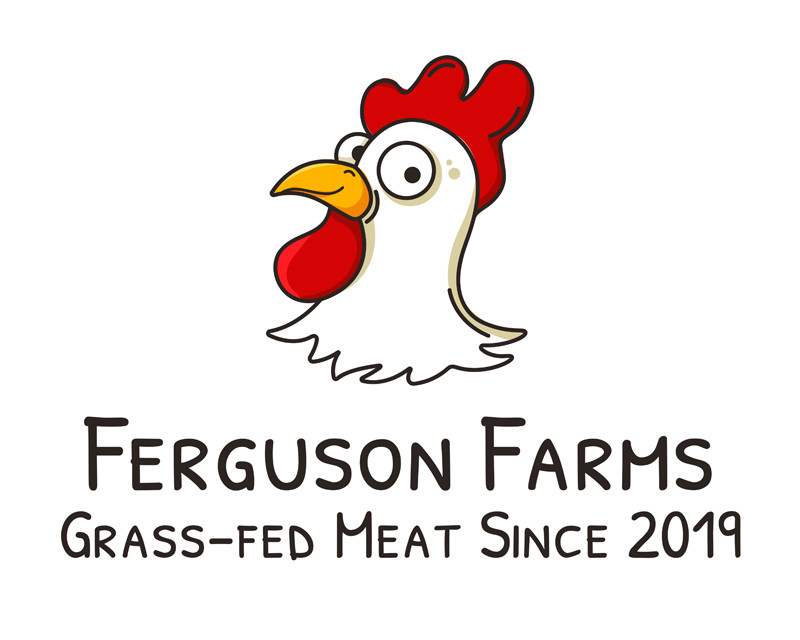Grass-Fed vs. Corn-Fed Beef
posted on
October 1, 2024
Grass-Fed vs. Corn-Fed Beef | Ferguson Farms
Grass-Fed vs. Corn-Fed Beef: What’s the Difference?

When choosing beef, consumers are often faced with two primary options: grass-fed or corn-fed beef. The distinction between these two types of beef lies in the diet the cattle receive, how they are raised, and the resulting impact on the meat's nutrition, flavor, and environmental footprint. At Ferguson Farms, we believe in raising our cattle the natural way, which means feeding them grass from start to finish. In this blog, we’ll explore the key differences between grass-fed and corn-fed beef, why they matter, and how these choices impact your health and the environment.
1. The Diet: Grass-Fed vs. Corn-Fed
The most significant difference between grass-fed and corn-fed beef is the diet of the cattle.
Grass-Fed Cattle: A Natural Diet
Grass-fed cattle are raised on a diet of grasses and forages for their entire lives. This means that they graze on open pastures, eating what nature provides. The result is a leaner, more nutrient-dense cut of meat. At Ferguson Farms, our grass-fed cattle enjoy a free-range lifestyle that allows them to express their natural behaviors while consuming a diet that aligns with their biology.
Corn-Fed Cattle: A Diet of Grains
Corn-fed cattle, on the other hand, spend a significant portion of their lives in CAFOs (Concentrated Animal Feeding Operations), where they are fed a diet primarily consisting of corn, soy, and other grains. This grain-heavy diet is designed to fatten the cattle quickly, resulting in more marbling (fat content) in the meat. However, this unnatural diet leads to differences in the nutritional profile and has significant environmental consequences.
For more details on how a natural diet impacts cattle and the quality of meat, check out our Guide to Grass-Fed Beef.
2. Nutritional Differences: Why Grass-Fed is Healthier
The diet of the cattle directly influences the nutritional content of the meat. When comparing grass-fed and corn-fed beef, it’s clear that grass-fed beef has superior health benefits.
Grass-Fed Beef: Leaner and Nutrient-Rich
Grass-fed beef is leaner and contains higher levels of essential nutrients, making it a healthier option. Here’s what sets grass-fed beef apart:
- Higher in Omega-3 Fatty Acids: Grass-fed beef has up to five times more omega-3 fatty acids compared to corn-fed beef. Omega-3s are essential for heart health and reducing inflammation in the body.
- Higher in CLA (Conjugated Linoleic Acid): CLA is a healthy fat found in higher concentrations in grass-fed beef. It has been linked to reduced body fat and improved immune function.
- Rich in Vitamins and Antioxidants: Grass-fed beef contains more vitamins, such as vitamin E and beta-carotene, which help protect against cell damage and support overall health.
Corn-Fed Beef: More Fat, Fewer Nutrients
While corn-fed beef tends to be more marbled, meaning it contains more intramuscular fat, it is also lower in beneficial nutrients like omega-3s and CLA. The high corn and grain diet results in meat that has higher levels of omega-6 fatty acids, which, when consumed in excess, can contribute to inflammation and other health issues.
For a comparison of how grain-fed beef stacks up nutritionally, read our post on Grass-Fed vs. Grain-Fed Beef.
3. Environmental Impact: Grass-Fed vs. Corn-Fed
The differences between grass-fed and corn-fed beef go beyond nutrition—they also have significant environmental implications.
Grass-Fed Beef: A Sustainable Choice
Raising cattle on pasture not only benefits the animals but also supports environmental sustainability. At Ferguson Farms, we practice rotational grazing, which allows our cattle to graze on different sections of pasture in cycles. This helps:
- Improve Soil Health: Rotational grazing enriches the soil, promotes plant biodiversity, and reduces soil erosion.
- Reduce Carbon Footprint: Grass-fed cattle contribute to carbon sequestration, capturing and storing carbon in the soil, which helps mitigate climate change.
- Water Efficiency: Raising cattle on pasture requires less water compared to growing grains for feed, making it a more resource-efficient system.
Corn-Fed Beef: Environmental Costs
Corn-fed cattle raised in CAFOs contribute to numerous environmental challenges:
- High Water and Resource Usage: Growing corn and soy to feed cattle requires vast amounts of water, land, and energy. This leads to deforestation, soil degradation, and overuse of natural resources.
- Greenhouse Gas Emissions: CAFOs produce large amounts of methane, a potent greenhouse gas that contributes to global warming. The confinement of cattle in feedlots also results in waste management challenges, with manure runoff often contaminating water sources.
For more information on how grass-fed systems promote environmental sustainability, check out our Sustainable Farming Practices.
4. Animal Welfare: Ethical Farming Practices
Animal welfare is a core principle at Ferguson Farms, and the way cattle are raised in grass-fed systems reflects a higher standard of care.
Grass-Fed Cattle: Raised Humanely
Our grass-fed cattle spend their lives grazing on open pastures, free from confinement and stress. This natural lifestyle allows them to express their natural behaviors, resulting in healthier, less stressed animals. Because grass-fed cattle live in more sanitary conditions and eat a natural diet, they are less likely to require antibiotics or growth hormones.
Corn-Fed Cattle: Confined and Stressed
In contrast, corn-fed cattle raised in CAFOs are often confined to crowded feedlots, where they have little space to move and are exposed to unsanitary conditions. The stress of confinement and an unnatural grain diet can lead to health problems, which are often managed with antibiotics.
To learn more about how pasture-raised systems promote animal welfare, visit our post on What Does Pasture-Raised Mean.
5. Flavor Profile: The Taste of Grass-Fed vs. Corn-Fed Beef

Beyond nutrition and environmental concerns, the flavor of the beef is another important factor in the grass-fed vs. corn-fed debate.
Grass-Fed Beef: Rich and Complex Flavor
Because grass-fed cattle graze on a diverse range of plants, their meat has a richer, more complex flavor compared to corn-fed beef. Grass-fed beef is often described as having an earthy, robust taste, with a leaner texture. However, due to the lower fat content, it can be slightly less tender than corn-fed beef, requiring more attention when cooking.
Corn-Fed Beef: Buttery and Mild
Corn-fed beef is known for its high level of marbling, which gives the meat a buttery texture and mild flavor. While some consumers prefer this, it comes at the expense of nutritional value and environmental sustainability.
For tips on cooking grass-fed beef to bring out its full flavor, explore our recipes.
Conclusion: Why Grass-Fed Beef is the Superior Choice
When comparing grass-fed vs. corn-fed beef, it’s clear that grass-fed is the better option for your health, the environment, and animal welfare. Grass-fed beef is leaner, higher in essential nutrients like omega-3s and CLA, and is produced through sustainable farming practices that benefit the planet. In contrast, corn-fed beef may be more marbled and tender, but it lacks the same nutritional value and comes with significant environmental and ethical concerns.
At Ferguson Farms, we are proud to offer 100% grass-fed beef, raised on pasture in a way that prioritizes sustainability, animal welfare, and superior quality. Make the switch to grass-fed beef today and experience the difference for yourself.
For more insights into grass-fed beef and its benefits, check out our Guide to Grass-Fed Beef and Sustainable Farming Practices.




